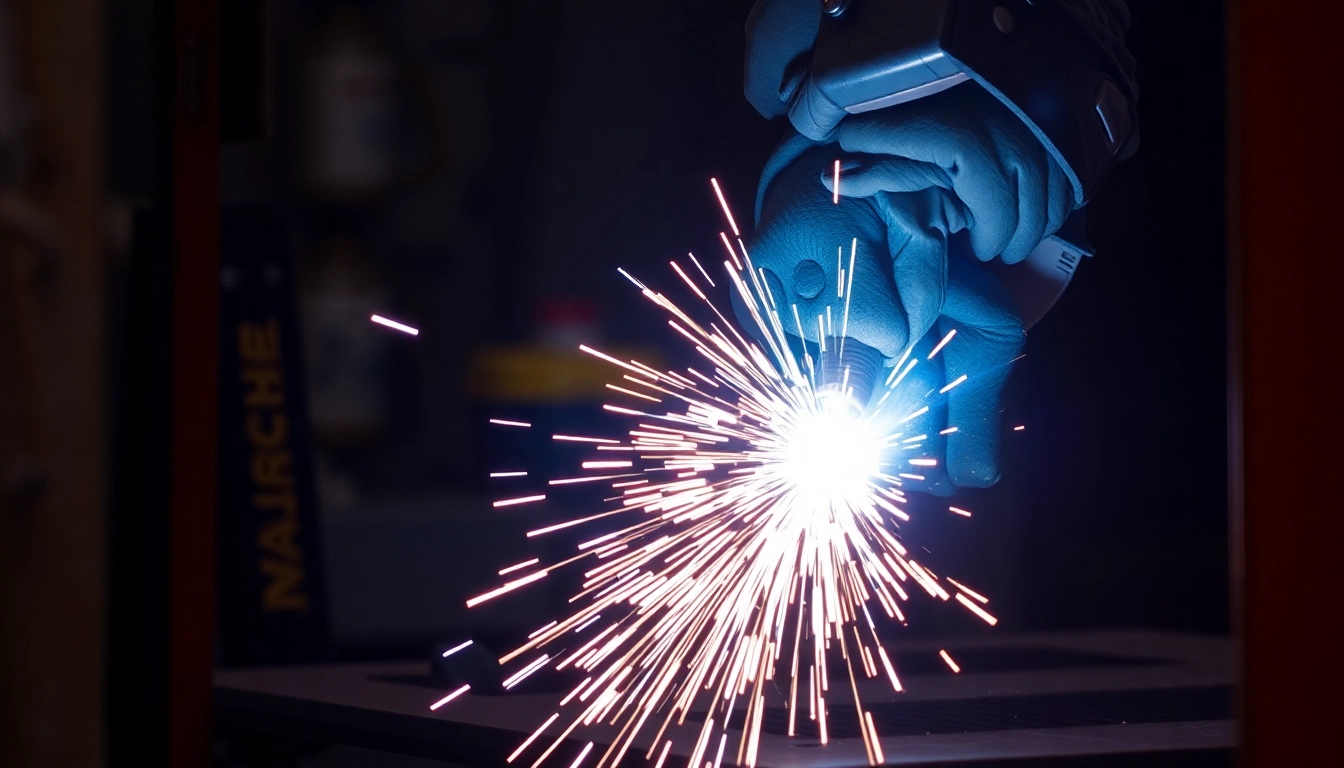Understanding AC DC TIG Welders
What is an AC DC TIG Welder?
An AC DC TIG welder is an advanced welding machine that allows users to weld using both alternating current (AC) and direct current (DC) amperage, providing versatility in the types of materials that can be welded. AC is primarily used for welding aluminum and other non-ferrous materials, while DC is commonly used for ferrous materials such as steel and stainless steel. This dual functionality makes the AC DC TIG welder indispensable for professional welders and hobbyists alike, enabling them to tackle a wider range of projects with just one machine.
Benefits of Using AC DC TIG Welders
The benefits of AC DC TIG welders extend far beyond their versatility in material compatibility. Here are some key advantages:
- Precision: TIG welding, known for its ability to create precise and clean welds, is favored in industries that demand high quality, such as aerospace and automotive sectors.
- Control: With the ability to adjust settings meticulously, operators can better control heat input and welding speed, which minimizes the risk of overheating or warping materials.
- Variety of Applications: From thin sheet metals to thick sections, AC DC TIG welders are equipped to handle various thicknesses and types of metals, expanding the range of projects you can undertake.
- Improved Finish: They produce a cleaner and smoother finish compared to other welding processes, reducing the need for additional finishing work.
Key Features to Look for in an AC DC TIG Welder
When selecting an AC DC TIG welder, several features should be considered to ensure optimal performance:
- Welding Output Range: Look for a machine that offers a wide welding output range to accommodate different materials and thicknesses.
- Foot Pedal Control: A foot pedal allows for better control over the welding amperage, making it easier to adjust while working, especially in intricate projects.
- Duty Cycle: This refers to how long the welder can operate continuously before it needs to cool down, which is crucial for prolonged or high-volume work.
- Portability: For those who frequently move their equipment, weight and ease of transport are vital considerations.
Applications of AC DC TIG Welding
Common Uses in Industry
The versatility of AC DC TIG welding makes it suitable for a wide range of industries. Some common applications include:
- Aerospace: The aerospace industry demands high precision and quality, making TIG welding a go-to method for structural components and assembly.
- Automotive Repair: In automotive workshops, TIG welding is utilized for fabricating exhaust systems and repairing damaged components made from aluminum and stainless steel.
- Manufacturing and Fabrication: Many manufacturers rely on TIG welding for creating custom machinery and tools, as it allows for intricate designs and strong joints.
Aluminum Welding and AC DC TIG
One of the standout features of AC DC TIG welding is its efficacy with aluminum. The use of alternating current (AC) in this process helps in breaking down the oxide layer that develops on aluminum surfaces. This leads to a more effective weld. With precise control over heat using an ac dc tig welder, welders can manipulate the thermal input to prevent overheating and warping, thereby maintaining the integrity of the material.
Creative Projects and Fabrication
Beyond industrial applications, AC DC TIG welders are popular for creative projects in metal fabrication. From custom art pieces to intricate jewelry making, the precision offered by TIG welding allows artists and artisans to achieve designs that would be impossible with less sophisticated welding methods. Whether cutting thin metal for delicate carvings or joining heavy sheets for robust sculptures, the adaptability of AC DC TIG welding facilitates creativity.
Comparing Top AC DC TIG Welders
Specifications and Performance Metrics
When purchasing an AC DC TIG welder, it’s crucial to compare specifications that impact performance. Common metrics include:
- Amperage Range: A wider amperage range allows for more versatility in welding different materials and thicknesses.
- Weight and Portability: Some welders are designed to be lightweight and portable, making them suitable for remote job sites.
- Cooling System: Efficient cooling systems can extend the duty cycle and improve the welder’s longevity.
Price Ranges and Value
AC DC TIG welders come at various price points, depending on features, brand, and capabilities. Entry-level models can start at a few hundred dollars, while high-end, industrial-grade machines can exceed several thousand dollars. It’s essential to balance your choice based on budget and the specific needs of your projects.
User Reviews and Ratings
Researching user reviews and ratings can provide insight into the real-world performance of specific models. Reviews often discuss the ease of use, the reliability of the machine, and customer service experiences. Look for models that have consistent positive feedback regarding their performance in both novice and advanced applications.
Setting Up Your AC DC TIG Welder
Installation and Safety Measures
Proper installation and safety precautions are paramount when setting up your AC DC TIG welder. Here are some steps to follow:
- Choose the Right Location: Ensure your work area is ventilated and free of flammable materials. A sturdy, stable workbench is ideal.
- Electrical Requirements: Verify that your power source meets the specifications required by your welder to prevent electrical issues.
- Wear Protective Gear: Always wear the appropriate personal protective equipment, including a welding helmet, gloves, and flame-resistant clothing.
Tuning Your Welder for Optimal Performance
To get the best results from your AC DC TIG welder, it is essential to properly adjust settings before beginning your work. Factors to consider include:
- Setting the Amperage: Start with a low setting and gradually increase it based on the material thickness and type.
- Electrode Preparation: Ensure your tungsten electrode is ground to the correct angle and sharpened to a fine point for optimal arc stability.
- Gas Flow Rate: Set the argon gas flow rate to ensure adequate shielding without excess turbulence affecting the weld puddle.
Techniques for Beginners
For beginners, mastering AC DC TIG welding techniques can take time and practice. Here are some valuable tips:
- Practice Control: Work on controlling the arc length and travel speed to improve your stability and reduce defects.
- Experiment with Different Materials: Use scrap pieces to practice welding a variety of materials to see how different settings affect the weld.
- Learn to Align Joints: Proper alignment before welding can significantly impact the quality of the weld, so spend time ensuring your pieces are properly positioned.
Maintenance and Troubleshooting
Routine Maintenance Tips
Regular maintenance ensures your AC DC TIG welder continues to operate effectively. Here are some tips:
- Clean the Torch: After every use, clean the torch, including the collet and gas lenses, to prevent contamination and ensure smooth operation.
- Inspect Cables: Routinely check all cables for signs of wear or damage to prevent electrical hazards.
- Replace Consumables: Keep spare tungsten electrodes and nozzles on hand, and replace them as necessary to maintain performance.
Common Issues and Solutions
Even with regular maintenance, welders may encounter issues. Here’s how to troubleshoot common problems:
- Inconsistent Arc: If the arc feels unstable, check the gas flow settings and ensure the tungsten is properly sharpened.
- Poor Penetration: Increase the amperage setting and decrease travel speed to achieve better penetration during the weld.
- Excessive Spatter: Adjust the gas flow or clean the area to reduce contamination affecting the quality of the weld.
When to Consult a Professional
If you find yourself consistently facing issues that you cannot troubleshoot, it may be time to consult a professional. Serious electrical issues or persistent problems affecting performance may require expert intervention. Additionally, for complex projects requiring high precision, seeking a professional’s expertise can ensure optimal outcomes and savings in the long run.



